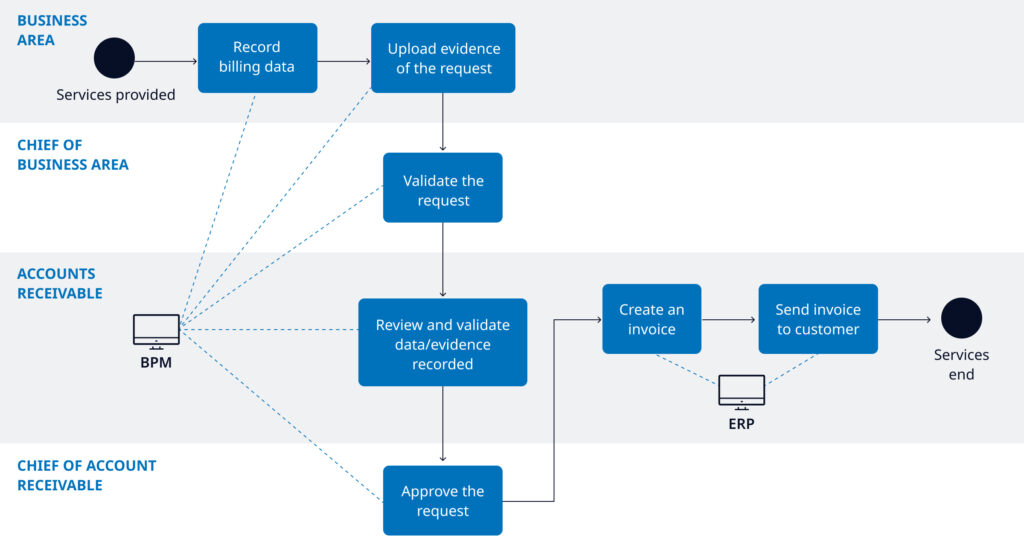What is BPM?
Although many of the back-office processes are managed by ERP systems or specific solutions, there are always tasks or activities that are not covered and are usually performed manually, compromising traceability of information, prolonging resolution times and becoming prone to errors.
BPM (Business Process Manager) is a technology that helps companies to digitalize some of these manual tasks. It is especially recommended for running validation processes where it is necessary to share files that must be reviewed and digitally approved to continue the process flow in the corresponding tool.
This is an example of a standard billing process flow in which BPM is used for the management of the requests prior to the invoice creation:

Real case of BPM implementation
Our client implemented an ERP system years ago to manage and execute its business processes properly. As a result of business growth, several new business lines were incorporated, and new processes were developed. Unfortunately, the current system does not provide complete functional coverage for some of these processes and Finance struggled to meet the needs of business areas.
To solve these issues, they launched a transformation program of all back-office processes. NTT DATA composed a multidisciplinary team that combined functional process experts and technical experts to analyze the client’s current situation, identify pain points, propose solutions, and implement them.
NTT DATA’s team of experts discovered that multiple procedures to request Finance team to execute some tasks were done by email, losing traceability of information and the supporting evidence of the requests (ie. attached files). In addition, approvals of these requests were done manually.
The implementation of BPM solution was recommended to digitalize, standardize and shorten the time to manage:
- Request for the execution of a payment to Treasury team.
- Request for the issue of an invoice to Accounts Receivable team.
- Request for the capitalization of assets under construction to Fixed Assets team.
- Request for the replenishment of petty cash to Treasury team.
Benefits
The development of these procedures in BPM helped:
- Reduce time to successfully resolve these requests by providing alerts and notifications to manage open requests.
- Improve traceability on information shared with its digital repository capabilities.
- Foster service mindset with improved performance analytics and real-time tracking of requests status.
- Enhance cybersecurity by providing a secure environment for sharing files with confidential data.
Also, the BPM tools allow the customization of user interfaces to facilitate user adoption and shorten their learning curve.











